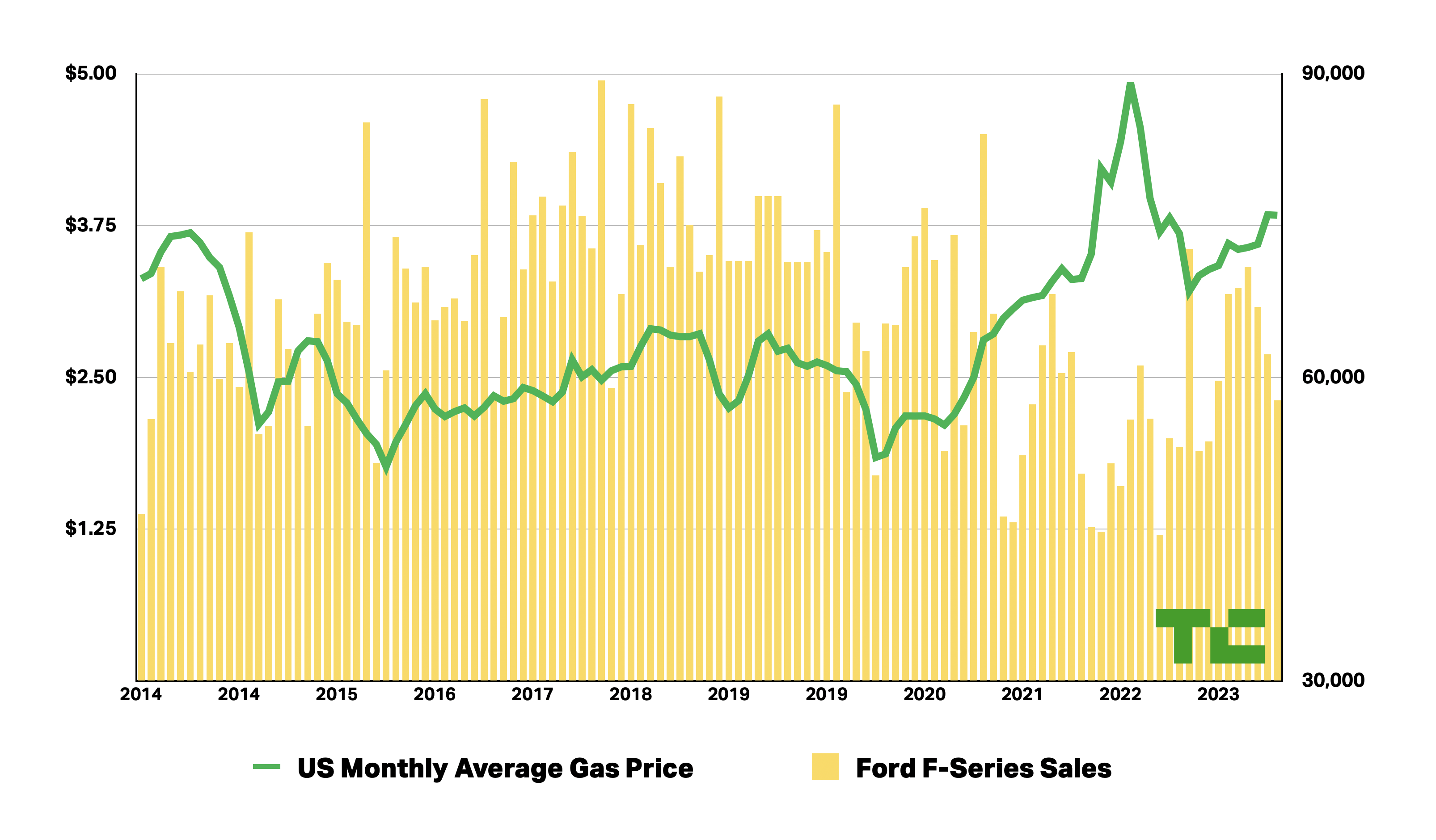Shoppers within the The US has the reminiscence of a goldfish.
When fuel costs rise, they search for extra economical transportation. However after they get to the underside, they rush to purchase the largest truck potential. Simply check out Ford F-Sequence gross sales information over the previous decade, alongside common month-to-month fuel costs.

Picture credit: Tim De Chant/TechCrunch+
To see? Goldfish.
It seems that American automakers resemble their buyer base. Just a few years in the past they had been optimistic about electrical autos. However now, after just some years of great funding, they’re beginning to get chilly ft.
Ford and GM specifically have mentioned they’re simply responding to the wants of their prospects. And possibly they’re! Some shoppers stay cautious as a result of electrical automobile charging nonetheless sucks. Others are delay by the excessive costs. (These are each undoubtedly self-inflicted wounds: legacy automakers have refused to cost for a good portion of the possession expertise, and Ford and GM have regularly raised electrical automotive costs in methods which can be out of step with the market.)
Such buyer focus may be an asset in regular occasions, permitting firms to adapt their product strains to the ups and downs of the market. However in occasions of transition, when the long run is in flux, it may be a horrible option to run a enterprise.
Legacy automakers have lengthy mentioned their worthwhile mannequin strains could be a power because the market shifts to electrical autos. All three firms have introduced they’ll make investments billions in creating electrical autos and making the batteries that energy them, and it seems to be just like the plan is figuring out simply fantastic.
Over the previous decade, automakers have flocked to crossovers, SUVs and pickup vehicles, three of essentially the most worthwhile segments. American automakers have gone additional than most. Ford went as far as to cease producing mass-market vehicles and as an alternative targeted on crossovers, SUVs and pickups, with the occasional Mustang coupe thrown in for branding functions.
How did it go? Really fairly properly. Ford reported a revenue of $1.2 billion for the third quarter, not dangerous contemplating the headwinds attributable to the UAW strike. GM fared higher, bringing in $3.1 billion in the identical quarter. Stellantis sometimes does not launch its quarterly outcomes till November, however the first half of the yr went gangbusters, posting a revenue of $12.1 billion.
So why have Ford and GM determined to place the brakes on their EV plans?